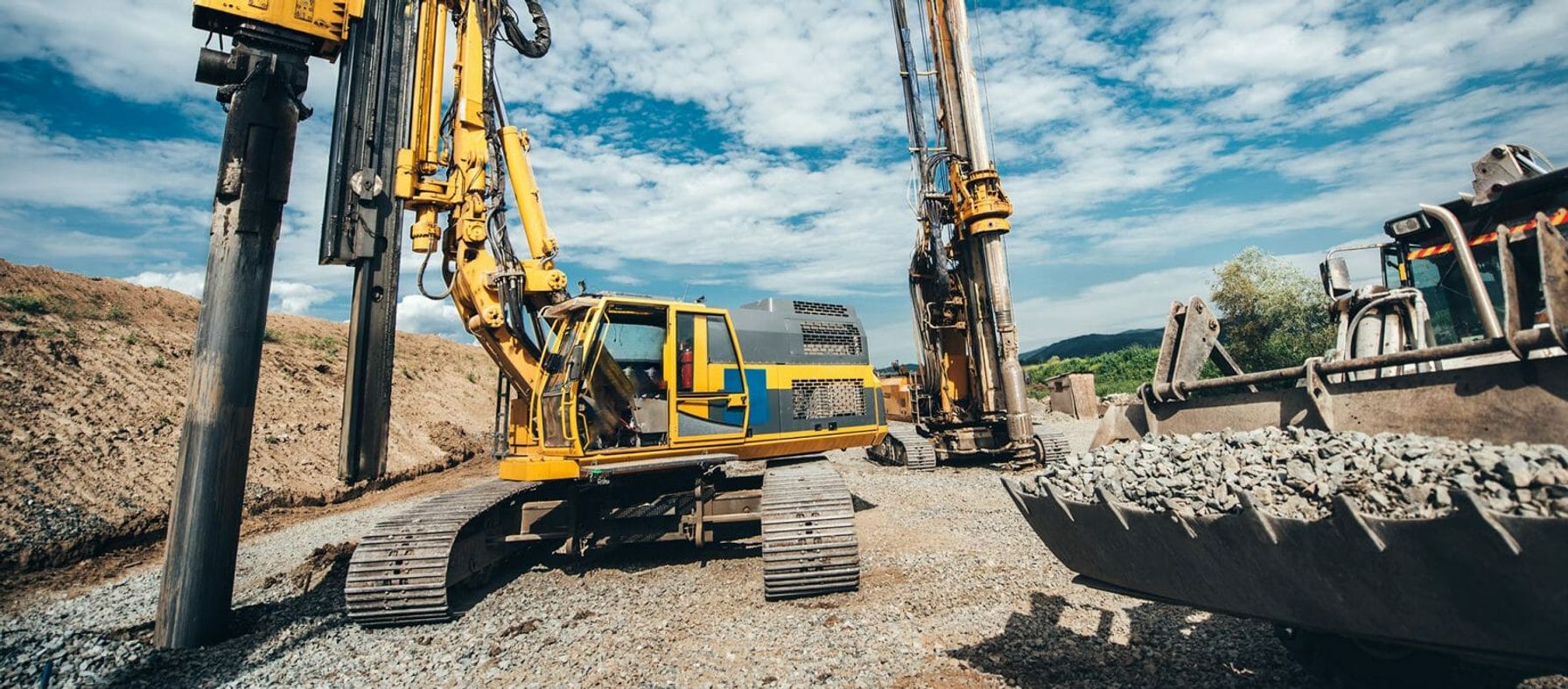The 20-Second Trick For Geotheta
The 20-Second Trick For Geotheta
Blog Article
The Best Strategy To Use For Geotheta
Table of ContentsThe Buzz on GeothetaGeotheta - TruthsHow Geotheta can Save You Time, Stress, and Money.The Ultimate Guide To GeothetaSome Known Details About Geotheta

They carry out site examinations, gather examples, do lab tests, and examine data to assess the viability of the ground for building jobs - Geotechnical Engineers. Based upon their searchings for, geotechnical engineers offer referrals for structure layout, incline security, retaining structures, and mitigation of geotechnical hazards. They collaborate with other professionals, such as engineers, architectural designers, and construction teams, to guarantee that geotechnical considerations are integrated right into the total task layout and execution
By evaluating the behavior and buildings of soil and rock, they can identify prospective geotechnical threats such as landslides, soil settlement, or incline instability. Their proficiency assists stop failures or crashes that might jeopardize lives and residential or commercial property. Here are some in-depth tasks and duties of a geotechnical engineer: Website Investigation: Geotechnical engineers conduct site examinations to collect information on subsurface problems.
They interpret the data to comprehend the buildings and behavior of the soil and rock, including their toughness, permeability, compaction qualities, and groundwater conditions. Geotechnical Evaluation and Design: Geotechnical engineers assess the information collected throughout site investigations to evaluate the security and viability of the site for building jobs. They perform geotechnical computations and modeling to examine elements such as birthing ability, negotiation, slope stability, lateral planet pressures, and groundwater flow.
The Definitive Guide to Geotheta
Foundation Layout: Geotechnical designers play a crucial duty in creating structures that can safely sustain the designated structure. They assess the soil problems and lots needs to determine the suitable structure type, such as shallow foundations (e.g., grounds), deep foundations (e.g (http://peterjackson.mee.nu/where_i_work#c2299)., stacks), or specialized strategies like dirt improvement. They take into consideration elements such as settlement limits, birthing ability, and soil-structure interaction to establish optimum structure designs
They review construction plans, monitor website activities, and perform area evaluations to verify that the style suggestions are complied with. If unanticipated geotechnical issues emerge, they examine the situation and give suggestions for removal or changes to the style. Threat Analysis and Reduction: Geotechnical engineers examine geotechnical threats and threats related to the project website, such as landslides, liquefaction, or dirt disintegration.

Collaboration and Interaction: Geotechnical engineers work very closely this content with various other professionals involved in a task, such as engineers, architectural designers, and construction teams. Efficient interaction and partnership are vital to integrate geotechnical considerations right into the total task design and building procedure. Geotechnical designers provide technological knowledge, response queries, and make sure that geotechnical demands are met.
The Greatest Guide To Geotheta
Here are some sorts of geotechnical designers: Foundation Engineer: Structure engineers focus on designing and evaluating foundations for frameworks. They assess the dirt problems, tons needs, and site characteristics to establish the most appropriate structure kind and design, such as superficial foundations, deep structures, or specialized methods like heap structures.
They review the variables influencing incline stability, such as soil properties, groundwater conditions, and slope geometry, and establish methods to avoid slope failings and reduce risks. Earthquake Engineer: Earthquake engineers concentrate on assessing and developing structures to hold up against seismic forces. They assess the seismic hazard of a website, evaluate soil liquefaction capacity, and establish seismic style requirements to guarantee the safety and security and durability of structures throughout quakes.
They do area testing, collect examples, and assess the collected data to characterize the dirt properties, geologic formations, and groundwater conditions at a site. Geotechnical Instrumentation Designer: Geotechnical instrumentation engineers concentrate on surveillance and determining the habits of soil, rock, and structures. They install and preserve instrumentation systems that check variables such as dirt settlement, groundwater degrees, slope motions, and structural displacements to analyze efficiency and supply very early cautions of potential concerns.
Not known Details About Geotheta
They perform examinations such as triaxial tests, loan consolidation examinations, straight shear tests, and permeability tests to gather information for geotechnical analysis and layout. Geosynthetics Engineer: Geosynthetics designers specialize in the layout and application of geosynthetic materials, such as geotextiles, geogrids, and geomembranes. They utilize these products to boost soil stability, strengthen slopes, supply water drainage remedies, and control disintegration.
They have a tendency to be investigatory people, which implies they're intellectual, introspective, and curious. They are curious, methodical, sensible, analytical, and logical. Some of them are also social, indicating they're kind, generous, cooperative, individual, caring, handy, empathetic, skillful, and pleasant - Geo Tech Engineering.
In the office atmosphere, geotechnical engineers utilize specialized software application devices to carry out calculations, develop styles, and examine data. They prepare reports, testimonial task requirements, communicate with clients and employee, and coordinate job activities. The office setting gives a conducive atmosphere for research, analysis, and partnership with various other experts associated with the project.
Geotheta for Beginners
They frequently see job websites to perform site examinations, assess geotechnical conditions, and collect information for analysis. These check outs entail taking a trip to various areas, sometimes in remote or tough surfaces. Geotechnical engineers might do soil tasting, conduct tests, and screen construction tasks to ensure that the geotechnical aspects of the job are being applied correctly.
Geotechnical designers additionally work in specialized geotechnical labs. In these centers, they perform experiments, carry out examinations on dirt and rock samples, and examine the design homes of the materials. Geotechnical lab engineers work extensively in these settings, taking care of testing equipment, operating tools, and tape-recording information. They team up with various other lab team to ensure accurate and reputable testing results.
Report this page